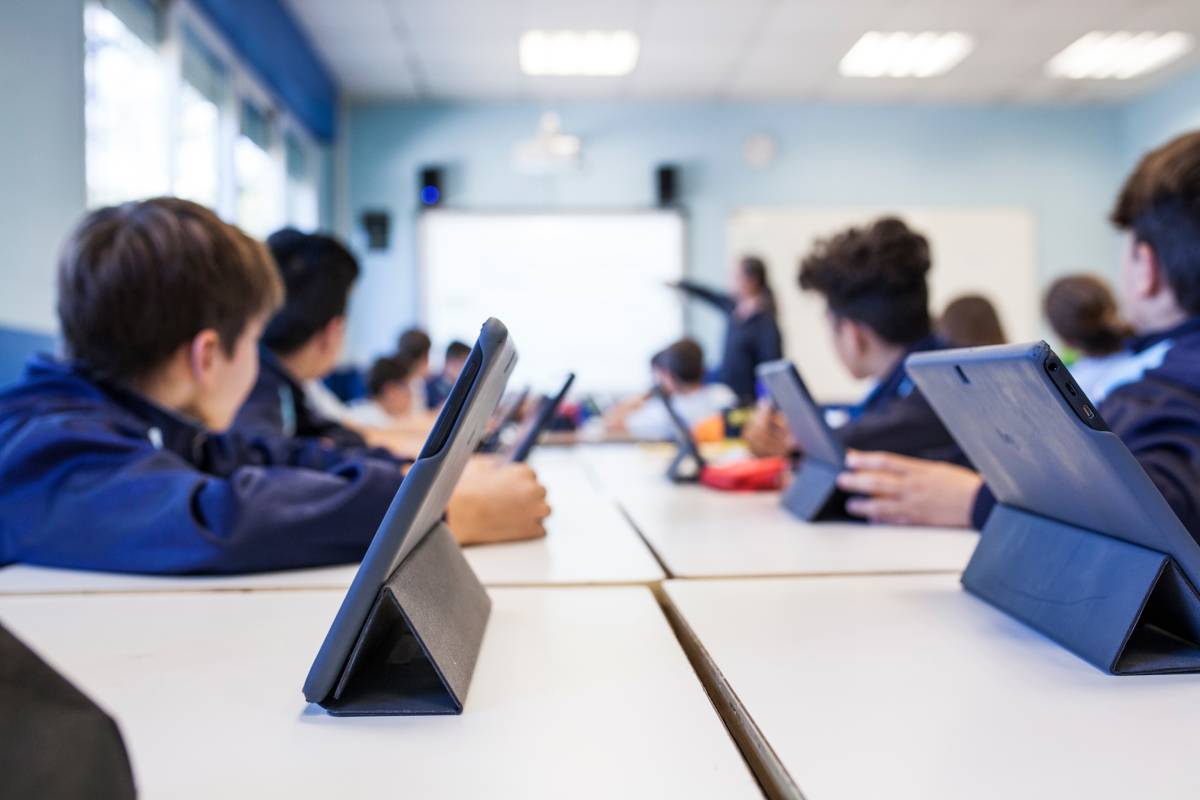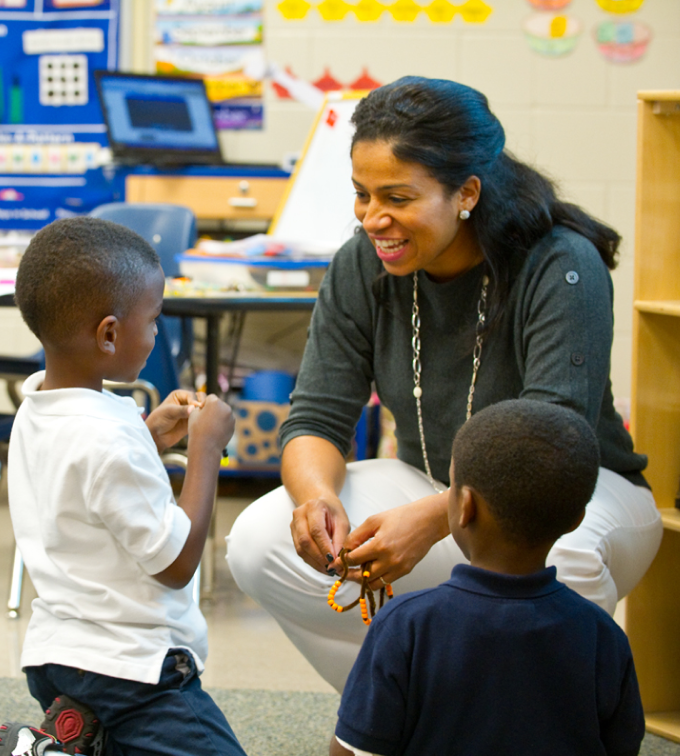Exploring the Different Training Strategies in Key Scientific Research Education Today
Inquiry-based knowing, hands-on experiments, and the assimilation of innovation are redefining how teachers engage young minds. Furthermore, collaborative approaches and separated instruction are being used to cater to the varied requirements of students, enhancing both engagement and understanding.
Inquiry-Based Learning
Inquiry-Based Learning (IBL) is a pedagogical method that motivates pupils to explore clinical principles through doubting, examination, and hands-on trial and error. This method highlights the duty of pupils as active participants in their understanding, advertising vital reasoning and analytic skills. By engaging with real-world questions, trainees end up being interested and determined, which boosts their understanding of clinical concepts.
In IBL, educators work as facilitators, guiding students as they navigate their inquiries as opposed to providing details straight. This student-centered strategy enables distinction, suiting numerous finding out designs and rates. Pupils establish skills in developing hypotheses, developing experiments, and examining data, which are critical for clinical proficiency.
In addition, IBL cultivates cooperation among students, encouraging them to share concepts and searchings for. This collective questions advertises social skills and a feeling of area within the classroom. Additionally, the process of questions motivates durability, as students find out to accept failure as a tipping stone towards understanding.
Hands-On Experiments
Hands-on experiments are an important part of efficient science education, enhancing the principles of inquiry-based learning. These experiments permit trainees to engage straight with scientific ideas, fostering a much deeper understanding through experiential discovering. By manipulating products and observing outcomes, young students can grasp abstract theories in substantial methods.
Such tasks promote important thinking and analytical abilities, as trainees assume outcomes, conduct experiments, and examine results. This process urges them to ask questions, fine-tune their understanding, and create a scientific way of thinking. Moreover, hands-on experiments can be tailored to diverse discovering designs, guaranteeing that all trainees have the possibility to engage meaningfully with the content.
Additionally, hands-on experiments often encourage collaboration among peers, advertising synergy and interaction abilities. Functioning in teams makes it possible for pupils to share concepts, review searchings for, and gain from each other, which enhances their total educational experience.
Incorporating hands-on experiments right into the main science educational program not just improves the learning environment but likewise grows a lifelong interest in science. By actively taking part in their education, students are more probable to create an interest for clinical query that extends past the class.

Technology Combination
Integrating technology into primary scientific research education and learning has ended up being progressively essential in fostering student engagement and boosting finding out outcomes. The usage of digital tools, such as interactive simulations, virtual laboratories, and instructional software program, provides pupils with chances to check out scientific principles in ingenious ways. These sources promote a deeper understanding of complex subjects by enabling learners to envision and control variables that would be impractical in a traditional class setting.
In addition, modern technology combination urges customized learning experiences. Trainees can progress at their very own pace, reviewing challenging principles with multimedia sources, which satisfy various knowing styles. This adaptability not just supports private development however additionally cultivates a feeling of autonomy in learners.
In addition, innovation functions as a bridge to real-world science, attaching students with present study and specialist payments. Accessibility to scientific journals and online databases widens students' point of views on scientific inquiry pop over to this web-site and cultivates crucial believing skills.
Collaborative Discovering
Joint learning plays an important duty in key science education by promoting synergy and interaction skills among students. This strategy urges learners to Recommended Reading work with each other, share expertise, and participate in problem-solving, which enhances their understanding of scientific ideas. By taking part in team tasks, pupils find out to express their concepts, pay attention to varied viewpoints, and negotiate solutions, all of which are vital skills in both real-world and scholastic contexts.

Study suggests that joint knowing can cause increased inspiration and engagement in science topics, as students find satisfaction in shared experiences (primary science tuition Singapore). Furthermore, this strategy prepares students for future collective ventures, equipping them with the skills needed for reliable teamwork in higher education and learning and specialist environments. Ultimately, accepting collective learning in primary science education can dramatically improve the knowing experience and promote a deeper understanding of scientific query
Set Apart Instruction

Differentiated direction can materialize try this out in different means, such as differing the content, procedures, or products of knowing. For circumstances, instructors may make use of tiered projects that give varying levels of intricacy, permitting pupils to work at their respective readiness levels. Furthermore, versatile organizing approaches can assist in collaboration among trainees with different capacities, promoting peer knowing.
Assessment plays a crucial duty in this technique, as it informs guideline and helps instructors understand each pupil's distinct demands. Formative analyses, such as observations and tests, can guide instructors in readjusting their techniques to boost discovering end results. primary science tuition Singapore. Ultimately, by carrying out distinguished guideline in primary scientific research education, instructors can cultivate an extra efficient and fair knowing setting, equipping all trainees to reach their full possibility in comprehending clinical sensations
Conclusion
In summary, the diverse mentor strategies in primary science education, including inquiry-based understanding, hands-on experiments, technology integration, collaborative knowing, and set apart guideline, jointly add to a more effective knowing atmosphere. These techniques advertise critical thinking, problem-solving skills, and a deeper comprehension of scientific principles. By implementing these techniques, teachers can develop encouraging and engaging classrooms that deal with the different requirements of trainees, eventually promoting a lifelong interest in science and enhancing scholastic success.
Inquiry-Based Discovering (IBL) is an instructional method that encourages students to discover clinical concepts through wondering about, examination, and hands-on experimentation.Collaborative understanding plays a crucial function in primary scientific research education by fostering synergy and communication skills amongst students.Study suggests that collaborative learning can lead to boosted motivation and involvement in science subjects, as trainees find satisfaction in shared experiences.In fostering a comprehensive learning setting, separated instruction arises as a crucial strategy to fit the varied requirements and capabilities of pupils in primary scientific research education. Eventually, by executing set apart instruction in main scientific research education, teachers can grow a more fair and reliable knowing setting, empowering all trainees to reach their complete possibility in understanding clinical sensations.